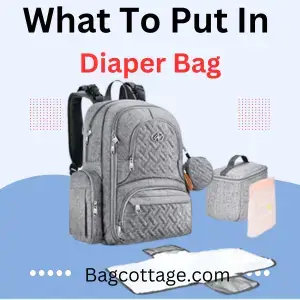Hunting Backpack Checklist of 2023 (Ultimate Gear List)
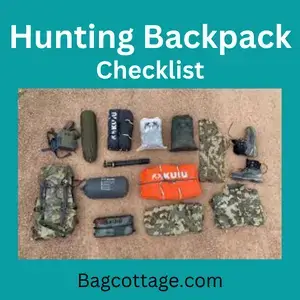
When preparing for a hunting expedition, everyone wishes to take only the essential gear items, although it can be tough to determine what you need to take vs. what you desire to carry. My equipment list is constantly changing. Any seasoned shooter understands that appropriate hunting gear may make or break a hunt.
So make a hunting backpack checklist. If you’ve already purchased a hunting backpack, the very next step is to figure out what to place in it. When you start hunting, it’s not just about what you bring in your hunting bag but also about how you load it. It is critical to organize your necessities so that you can find them quickly and easily without creating a fuss.
You will have to gather as much data as feasible, from the goods you bring on all excursions to the stuff you require for day shooting or deer shooting.
Table of Content
Hunting Backpack Checklist | An Informative Article
This is a thorough list of what should be packed in a hunting backpack. The products intended particularly for an overnight journey have been labeled as such. The remaining goods are designed for both day excursions and more extended hunts.
This hunting bag checklist does not contain essentials such as a weapon and camouflage clothing. The explanation for this is that you will be dressed in camouflage, and the gun will not be placed in your bag.
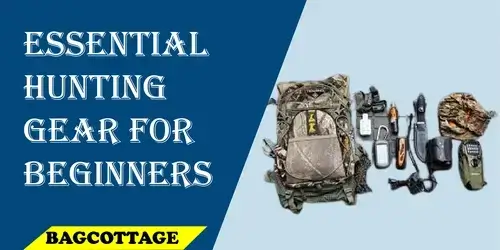
Water
Nothing is more extraordinary than water during a hunting expedition, no matter how long it lasts. Even if you’ve gone to the very identical region of the forest several times and know the whereabouts of a stream or riverbank with safe drinkable water, you must bring quite as much water as feasible with you.
Water bags in hunters’ backpacks enable you to keep your water supplies while taking up as little room as possible. This is one of the important hunting pack essentials.
If your bag does not include a few of these water pouches, you can keep your water source in Platypus inflatable water bottles. When deciding what gear to bring on your hiking trip, bear in a note that your water supply will contribute to the bulk of the load in your bag. As a result, arrange the remaining items appropriately.
Compass
It cannot be overstated how vital a compass is. It’s a bit component of gear that’s simple to ignore while preparing. However, it might be the distinction between going stuck in the forest and successfully navigating it. Most modern-day shooters utilize GPS units, and you can as well, but you must also take a compass.
Compasses, unlike GPS units, do not need energy and do not burn down quickly. Therefore, you may put it inside one of the backpack’s compartments and ignore it until you require it. Then, however, move it to the head of the deer hunting backpack essentials to guarantee you don’t forget to carry it.
First Aid Kit
Do not depend on coincidence or fortune to go through a hunting expedition uninjured. In the wilderness, mishaps and wounds are unavoidable. So, keep a simple first-aid kit in your bag.
Is there a possibility you won’t need it throughout your trip? Yes. Do you wish to be without a first-aid box in the event of a significant scratch or injury? No. Will it bring a tremendous amount of load or use up a lot of room in the bag? No. Can a first-aid kit be included on the list of things to take in a hunting backpack? Yeah.
Antiseptic ointment or cream, dressings, pain relievers, digestive medicine, water filtration pills, hand sanitizer, and duct tape should all be included in the first aid box. This may be expanded based on your needs. A first-aid paracord band package is also available.
Knife for Hunting
You’ll require a field mending knife that’s sharp, robust, and long-lasting. It’s a must-have item for every hunting expedition. Some shooters even bring an additional pocket knife. Make sure the knife you carry is sharp and has a sturdy body with a good grip.
A doggie grip raises the likelihood of an injury occurring. It might slide out of your grasp and injure you, particularly if it has recently been pointed. You may even buy knives with interchangeable handles, which are ideal for shooting excursions.
Flashlight or Headlamp
A regular flashlight will not be enough for a hunting expedition. You’ll require a waterproof combat flashlight. You’ll require it at night to find stuff in your bag. It will be helpful when you need to make your route to or from the campground to answer nature’s call. It will also come in handy if the climate unexpectedly changes during a day excursion and you are required to make your way back to your car.
The apparent benefit of using a headlamp is that it frees up both of your hands. You may utilize it in place of the flashlight, or you can take both. Headlamps are very handy for nighttime hunting expeditions.
Rain Gear
Even if you don’t require it during the journey, it’s a good idea to have rain gear. The distinction between a coat and rain equipment is that the first is separate clothing, while the second consists of waterproof jackets and trousers. Raincoats are helpful, although they do limit movement to some extent.
Rain gear is a preferable choice since it allows for more fluid movement. Rain gear should ideally be composed of materials that drain away water. This is crucial since you don’t desire rainwater to go inside your home and ruin your garments. Overnight hunts need the use of rain gear in particular.
If you don’t have rain gear, you risk freezing if it rains heavily. Compact rain gear that may be rolled and packed into one side of the bag is accessible.
Food
For a day’s journey, include nutritional snacks and a Ziploc bag with dry fruit and walnuts. That will keep you going for the rest of the day. Sandwiches can also be carried, although they will take up more room.
You’ll need to bring other food with you if you’re going on an evening hunt. Hamburger jerky, along with high-calorie protein shakes, is ideal for long travels. Making a hunting backpack checklist is important.
Cooking Equipment (Overnight Trip)
For lengthy hunting outings, it’s a good idea to include portable cooking equipment like Jetboil as well as a variety of freeze-dried foods. It’s straightforward to operate, and by the end of the day, you’ll have a hot supper. You may also bring a Jetboil on a day excursion, especially if you’re going shooting with a bunch of buddies.
Finding a great place to cook in the evening and exchange tales will be a fun activity. A single hunter can carry these, but they add a significant amount of weight.
Gloves
Gloves are helpful for various purposes, like keeping your hands warm in inclement weather, shielding your fingers from wounds, scratches, and other accidents, camouflaging your hands, and safeguarding your hands throughout the field dressing procedure. We frequently use our hands more than we anticipate.
Uncovered hand motions stand out in the forest and notify the game you’re following. Gloves assist in integrating the hands with the environment. If you’re going shooting in hot temperatures, a pair of thin netting gloves will suffice. In cooler temperatures, you’ll require a decent pair of leather gloves. Pack an extra pair of gloves in the event the ones you’re wearing become destroyed, mainly if you’re working outside.
Trash Bags
Bring a set of garbage bags to dispose of any food scraps, plastic pieces, or other types of waste that you may have left behind. Place the garbage bags in one of the backpack’s compartments and discard them when you arrive house.
Bags for Game
These are intended for the animals you are hunting. To transport the heavier chunks of meat, you’ll require suitable game bags. Unfortunately, regular garbage bags are significantly lighter than game bags and prone to tear, resulting in leaks. You may also purchase reusable gaming bags.
HOW TO PACK A BACKPACK FOR HUNTING
Let’s begin with a broad overview of shooting backpack packing; the rules pertain to all hunts, irrespective of the kind or duration of your experience: Follow the following tips to pack a backpack.
Items That are Light and Bulky at The Bottom
Items that are indestructible, compact, and bulky should be kept at the base of your bag. For example, tents, clothing, or sleeping blankets should be put vertically such that the heavy things rest over the hip belt, keeping the delicate things from striking the floor as you lie.
Items That are Hefty at The Body and Above The Belt
Heavyweight goods, such as water and meals, must be kept near the frame, while lightweight ones should be kept away. Certain foods will be bulkier than others; you can order the food based on the duration of your quest. Ensure not to overload one edge of the backpack greater than the other, mainly if you’re shooting in a problematic area.
Frequently Utilize Top
More miniature goods (GPS, radio, light, etc.) must be packed towards the top, with gloves, a hat, or a neck gaiter for protection. If the bag has a detachable compartment cover, you may utilize it to store camping supplies; leave the lid off when out hunting. Some shooters also use the top to keep water or small things that they frequently need.
If there is a risk of rain, keep the shooting rain gear in an exterior compartment. Otherwise, it’s best to bury it deep within the pack.
Tripods, Optics
If you’re using a sighting lens and tripod, putting them in the bag will give you more security. However, you will lack quick and easy access, so utilize an extra pouch for the sighting scope and another bag on the other end for the tripod.
If you’re shooting with a crossbow or rifle, you may connect it to the tripod’s contrary direction for better overall load redistribution and stability. Compression bands can be used to secure them.
SPECIFIC BACKPACK HUNTING GEAR LIST
- Game Bags Equipment
- Game Handling Package
- Registration and Tag (knives, paracord, gloves, etc.)
- Guns and ammo
- Arrows
- Optics= hunting binoculars
- weapon of choice
ULTRALIGHT HUNTING GEAR LIST
- Backpack
- Tent
- Sleeping Bag
- Sleeping Pad
- Ground Sheet
- Cook System
- Pack Liner
- Deer Hunting Checklist
- Extra ammo and a firearm
- Layering outfits.
- Permits and licenses are issued using a pen (in case a screenshot on your phone does not suffice)
- Robust hunter’s knife.
- Sandwiches and a drink
- Deer scents.
FAQs
What Do You Carry in Your Hunting Backpack?
These are essential hunting gear for beginners.
- Water
- First Aid Kit
- Rain Gear
- Headlamp
- Food/Snacks
- Knife
- Rubber Gloves
- Trash bags/ Game Bags
What Should You Have in Your Hunting Pack?
These are hunting backpack items
- Toothbrush and a small bottle of toothpaste
- Sunglasses
- Camera for photos
- Small medkit
- Knife
- Trash bags/ Game Bags
- Rangefinder
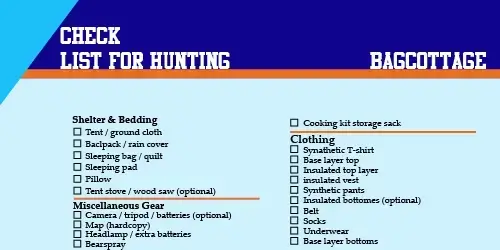
How to Wear Hunting Backpacks?
When you take on your hunting backpack you must pay care to many factors. It will require some time to memorize them, but it will be highly worthwhile in the longer term for the condition of your spine.
Use shoulder belts at all times, and never swing the bag with only one loop on one side. It may not appear to be much when worn for fifteen minutes, but it will assist avoid backaches later.
Wear the waistline and chest straps; the waist belt is essential for efficient pressure redistribution, moving it to your pelvis and down from your arms. In addition, the sternum band will keep the arm straps in position, lowering the likelihood of the backpack swinging.
The Final Word
Except for a few critical goods included for a long hunting expedition, you will carry the same hunting backpack checklist of supplies. While traveling, have a deer hunting checklist ready to guarantee you don’t forget anything. Ensure to bring a large roll of paper towels with you.
These are stronger than toilet rolls and may be utilized to clean grime off your body and palms. I’m continuously updating my hunting backpack checklist and want to know what other individuals bring any specific item of technology. Read this, for the school backpack chick list.
Recommended Articles!

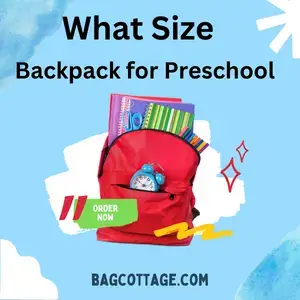
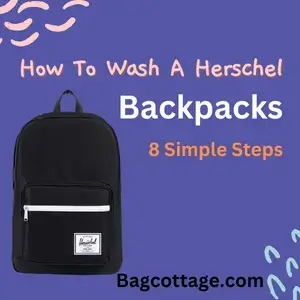

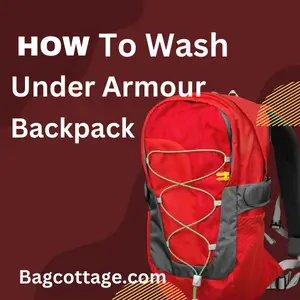
![Top 10 Backpack Brands in the USA [January 2024] 6 Top 10 Backpack Brands in the USA [January 2024]](https://bagcottage.com/wp-content/uploads/2020/04/Backpack-Brands-in-the-USA.webp)
